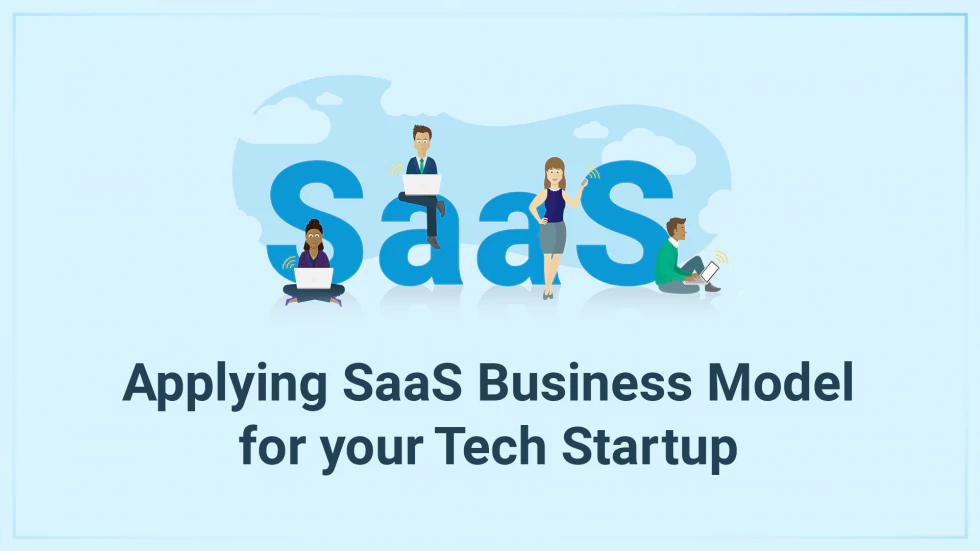With the growing use of convenient and versatile SMART devices, subscription-based software is becoming popular. Instead of purchasing and installing software on their devices, users prefer cloud-based solutions.
SaaS (Software as a Service) refers to an application deployed to give customers access to software via the internet. SaaS enables customers to use the software by simply going to a secure website using the internet only. Users need not install the software on their devices. Besides, customers can use the software customized to their business needs by simply paying a monthly fee.
Why do Customers Prefer the SaaS Business Model?
One of the prime reasons a Tech Startup should use the SaaS Business Model is comparatively lower up-front capital expenditure. Unlike the padded downright charges customers have to pay for the purchase of software, SaaS applications are subscription-based. You only have to pay for specific features rather than purchasing the whole software.
Similarly, SaaS saves further up-gradation costs as the customer does not have to pay hefty prices to install newly updated versions. Instead, the upgrades and other software services are regularly added on the secure site available on the internet. Hence, it saves customers’ time, resources, and the need to keep them updated about new versions and updates.
Moreover, ease of access also helps companies boost their sales and profits. You can accumulate contracts as a source of future revenues and grow your company assets.
Benefits of Using a SaaS Business Model
With the emergence of Cloud computing and smart devices, many profitable ventures are making the transition into subscription-based services. Businesses are now preferring SaaS Business Models to standard software.
Going for the SaaS Business Model brings about several advantages. Some of them are discussed below:
1. Scalability
The demand for real-time information forces companies to process large amounts of data on time. With the scalability offered by SaaS applications, companies can handle high volumes of data transactions in real time. Additionally, they can make informed decision-making by getting up-to-date reports.
A variety of subscription tiers offered by SaaS providers allow customers to meet the needs of their users. They can even change between the options and collaborate at different locations. Hence, tech startups can easily cope with their competition and stay ahead of their competitors. They do not need to upgrade their hardware frequently because the SaaS provider manages all these things.
2. Lower Cost
Developing and hosting software requires multiple supporting devices, and operating systems, and attending to local device issues periodically. In SaaS Business Model, users only have to manage web browsers which are far less complicated and inexpensive.
Besides, companies need not develop an expensive SaaS site. This way, you can save the cost of infrastructure by simply using available SaaS platforms for much lower costs.
3. Licensing
SaaS users don’t need to have an end-user license to activate the software as the software is not installed on-premises. The SaaS subscription model offers adaptability and is highly accommodating to the needs of the customer.
Similarly, SaaS offers flexible monthly and yearly subscriptions based as and when needed, without having to purchase the license.
4. Convenience
In the SaaS business application, all customers are provided with tutorials, best practices, and samples. Besides, customers can start using the application as soon as they log in. Through free trials offered by SaaS providers, buyers can try the software before making the final purchase. Besides, SaaS Model also offers incremental new features and upgrades.
Moreover, SaaS tools are easy to use and allow employees to use them independently, resulting in increased productivity. Since businesses can access SaaS online, they need worry about piracy or audit issues. Another important factor contributing to convenience is that the customer does not have to face downtime or interruption in services. SaaS providers assist their customers round-the-clock while operating in different time zones.
5. Revenues
SaaS allows you to build loyal customers and enjoy regular revenues from monthly and yearly subscriptions. The revenue stream is also highly predictable as customers tend to stay longer and chances of canceling the subscription are meager.
Besides, the recurring and stable revenues allow the company to focus on attracting and retaining customers. You can achieve higher business growth without worrying about the bottom line. Hence, you can easily expand the SaaS Business Model to foreign markets by just marketing it globally. It does not need any resellers or middlemen to support the distribution.
Conclusion
Businesses can easily achieve a reliable platform for launching their applications in a high-end and economic manner. With its flexibility and scalability, SaaS Business Model gives results instantaneously while allowing you to adapt to change and grow. The benefits exist for both, the software and the customer as they both grow together while strengthening the IT services industry and improving its delivery.
This article describes how SaaS Business Model helps Tech Startups to anchor themselves in the market. SaaS applications finance customers’ purchase of software and allow them to pay overtime in the form of a monthly fee. This allows SaaS companies like Khired Networks to enjoy a continuous flow of monthly recurring revenues while giving the customer the convenience of use. Visit our website https://khired.com or email us at info@khired.com to avail our professional and expert SaaS development and management services.


Excellent article. I certainly appreciate this site. Continue the good work!